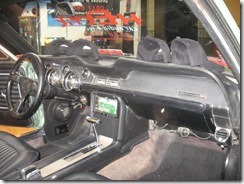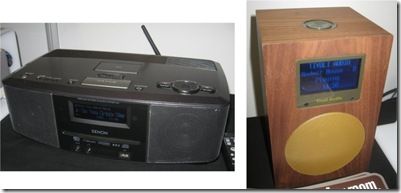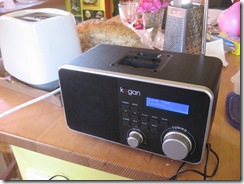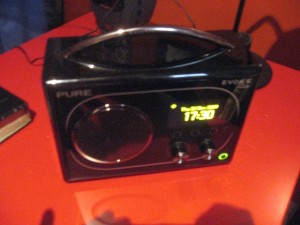Use of broadcast-network tuners to democratise pay-TV
TiVo, Sony and others to FCC: ‘gateways’ should replace CableCARD — Engadget HD
My comments on this idea
The common situation with most TV households is that if they sign up to a pay-TV service like Foxtel (Australia), a local cable-TV franchise in the USA, DirecTV (USA) or Sky TV (UK), they can only watch TV through the set-top box provided by the service provider. The TV remote control ends up becoming redundant as they have to use the set-top box’s remote control for their TV viewing.
If they want to use a DVR i.e.. a “personal TV service”, they have to use the DVR option provided by the pay-TV provider rather than get a retail DVR solution like TiVo, a home-theatre PC such as Windows Media Center or one offered by a major consumer-electronics brand. In some situations like some cable-TV implementations in the US, you may be able to use a retail DVR solution along with a special “CableCARD” and, perhaps, a “tuning adaptor”. But this doesn’t provide the full service that the customer has put money up for, such as interactive TV or access to “pay-per-view” or “on-demand” content.
As well, a lot of these providers often charge an extra fee if the user wants to deploy a set-top box in other rooms. This typically means that one TV set, usually the one installed in the main lounge room or family room, is subscribed to the pay-TV service. At best, most users may deploy the second set-top box in a secondary lounge area like the rumpus / games room.
What is the layout preferred by TiVo, Sony and others?
The layout would consist of the following:
- A “gateway device” or broadcast-network tuner connected to the cable service or satellite dish which “tunes” the pay-TV services and manages access to these services. It then makes them available over the home network using IP-based standards and technologies. This device can also pass back information relating to “pay-per-view” content orders or interactive television from the endpoint devices. It can also handle on-demand content offered by pay-TV providers in the convention context and fulfil the content to the desired end-devices.
- Standards-compliant endpoint devices (TV sets, DVRs, etc) that are connected to the home network and discover the services and content using technologies like DLNA. These devices can work with interactive services provided by the TV service provider and provide the viewer’s responses to the gateway device via the home network.
This is similar to the “broadcast-network tuner” setups like Devolo’s dLAN Sat, the Tivit ATSC mobile DTV WiFi tuner and the HD HomeRun tuner, where there is a digital-broadcast tuner that passes the signal via an IP-based home network to a hardware set-top box or software player program in a general-purpose computer so people can view the TV programme. These solutions typically used a non-standard control method and, in most cases, a single RF front-end so that only one TV set could operate at a time and they couldn’t work with a DVR or similar device.
Why develop this layout?
There is a desire for true competition in the multichannel pay-TV industry concerning end-user devices that is similar to what has occurred with telephone hardware since the Carterfone Decision in the USA and the Davidson Inquiry in Australia. One of the goals is to provide a TV navigation interface that encompasses off-air, pay-TV and IP-delivered content in the one electronic programme guide. This guide’s interface would be “skinned” to match the host device’s branding or any user customisations that are available to the device’s user. It also means that the user only needs to deal with one remote control to find whatever they want to watch.
This kind of layout could allow each TV set and each computer in the house to have access to all of the pay-TV services, rather than the common situation of having to deploy pay-TV set-top boxes to each place where there is a TV set.
There is the ability to upgrade the gateway to suit changing technological needs such as change of infrastructure or improvement in transmission or security protocols. That same ability also exists if the user wants to change providers or sign up to a supplementary-content service. Here, in all the situations above, there is no need to replace the end-user’s devices like DVRs or Internet-enabled TV sets, nor is there a need to replace software on any of the computers in the house to accommodate these changes.. In these cases, the software or firmware can discover the new services that are provided through the new hardware.
What needs to happen
One thing that needs to happen is high-profile implementation of common standard technologies like UPnP AV in the broadcast-reception sphere. This includes having endpoint and recording devices work to these standards when discovering and receiving broadcast signals via an IP network. It also includes the recognition of electronic-programme-guide data provided by these gateway devices, especially if the device that benefits from the data is a recording device like a “personal TV service”. It doesn’t matter whether the client device has the programme-guide data or the broadcast-network tuner has that data. This also includes handling situations where the same broadcast service can be received through different paths such as one or more over-the-air channels and / or a cable or satellite service.
In a similar light, broadband routers that work as the network-Internet “edge” could work as a “gateway” for IPTV services by storing channel lineups and service-authority information for these services. This device may also have to support handling of interactive-TV sessions in situations where the endpoint device cannot handle the sessions itself.
As well, interactive-TV setups would need to work with an IP backhaul irrespective of whether the TV signal is delivered via RF (cable, classic-TV-aerial or satellite) means or via an IP feed. This also includes allowing access to downloaded assets associated with interactive content.
Conclusion
As mentioned before, what needs to happen is the use of common standards and device classes to support broadcast-network tuners; standard viewing and recording devices; and the home network in order to democratise the provision of pay-TV services.




